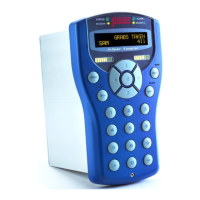SECTION 4: IP SETTINGS
As well as providing legacy serial connectivity, the InSpec has an Ethernet port and, if configured
correctly, can provide Modbus TCP (Master/Slave), Network Time Protocol (NTP) updates, SMS email
notification for alarms, batch reports, log files and diagnostic files etc, Ethernet printing, Telnet sessions and an
extensive Web browser interface to configure and monitor the application.
The InSpec IP settings must be configured correctly on the local network in order for all of the above
features to be readily available and used to their full potential. Adding third party IP equipment to a local network
governing process control equipment is historically viewed with suspicion. The important point to note is that
none of the InSpec IP related features are enabled by default. The following IP settings will need to be
determined and entered via the local network administrator for the InSpec to be deployed successfully onto the
local network. Once the local administrator has enabled the InSpec on a LAN (Local Area Network) they may
wish to open the InSpec to an external network for communication/support processes. To do this the local
administrator will need to configure/map their network in accordance with their local network infrastructure. The
local IT team are responsible for enabling\allowing both local and external access. The following bullet
points identify the key settings for IP connectivity and the specific parameters for each IP related feature.
4.1 IP Settings
The IP settings of the System menu have been covered already in the menu section 2.9.7. The purpose
of this section is to introduce some basic knowledge to internet connectivity and to cover each specific IP setting
in a little more detail and within one section that can be taken in isolation to the customer’s local network
administrator.
Before addressing the individual IP settings in the InSpec, let us look at what an IP Address is:
4.1.1 What is an IP Address?
As a term, "IP address" has and will continue to become a well-known expression as more and
more devices become IP enabled. Your computer has an IP address, your phone has an IP address and
now even unsuspecting devices like large cumbersome drinks dispensers have IP addresses. What
exactly is an "IP address"?
An IP address is an "internet protocol address". This is a unique identifying number given to
every single computer on the internet. Like a car license plate, an IP address is a special serial number
used for identification. Any machine connected to the internet has an IP address. In every case,
the IP address acts both like a car license plate or a telephone number: The IP address indicates
ownership and allows the machine to be located by other machines.
4.1.2 What do IP addresses look like?
IP addresses are comprised of four numbers separated by dots:
• e.g. 127.0.0.1
• e.g. 253.16.44.22
• e.g. 72.48.108.101
All the InSpec IP settings of IP address, subnet mask, default gateway and both the Primary
and Secondary DNS share the same format. They each consist of 4 numbers (called octets, separated
by dots). Certain addresses are reserved for internal, loopback or broadcast tests. Each octet is limited
between 0 and 255.
An IP address is a 32-bit number (in IPV4) that identifies each sender or receiver of information
that is sent in packets across an internet network. As an example, when you request a HTML page or
send an e-mail, the Internet Protocol, part of TCP/IP, includes your IP address in the message (in each
of the packets if more than one is required). The request is sent to the IP address that is obtained by
looking up the domain name in the web page address (URL - Uniform Resource Locator) you requested
or in the e-mail address you are sending an email to. At the other end, the recipient can see the IP
address of the web page requestor or the e-mail sender’s IP address and can respond by sending
another message using the IP address it received.
Now, turning to the specific configuration components of the InSpec IP settings, you will learn
how a protocol called DHCP (Dynamic Host Configuration Protocol) is used to determine whether the
InSpec IP address is obtained automatically via the DHCP protocol or whether it is entered manually.

